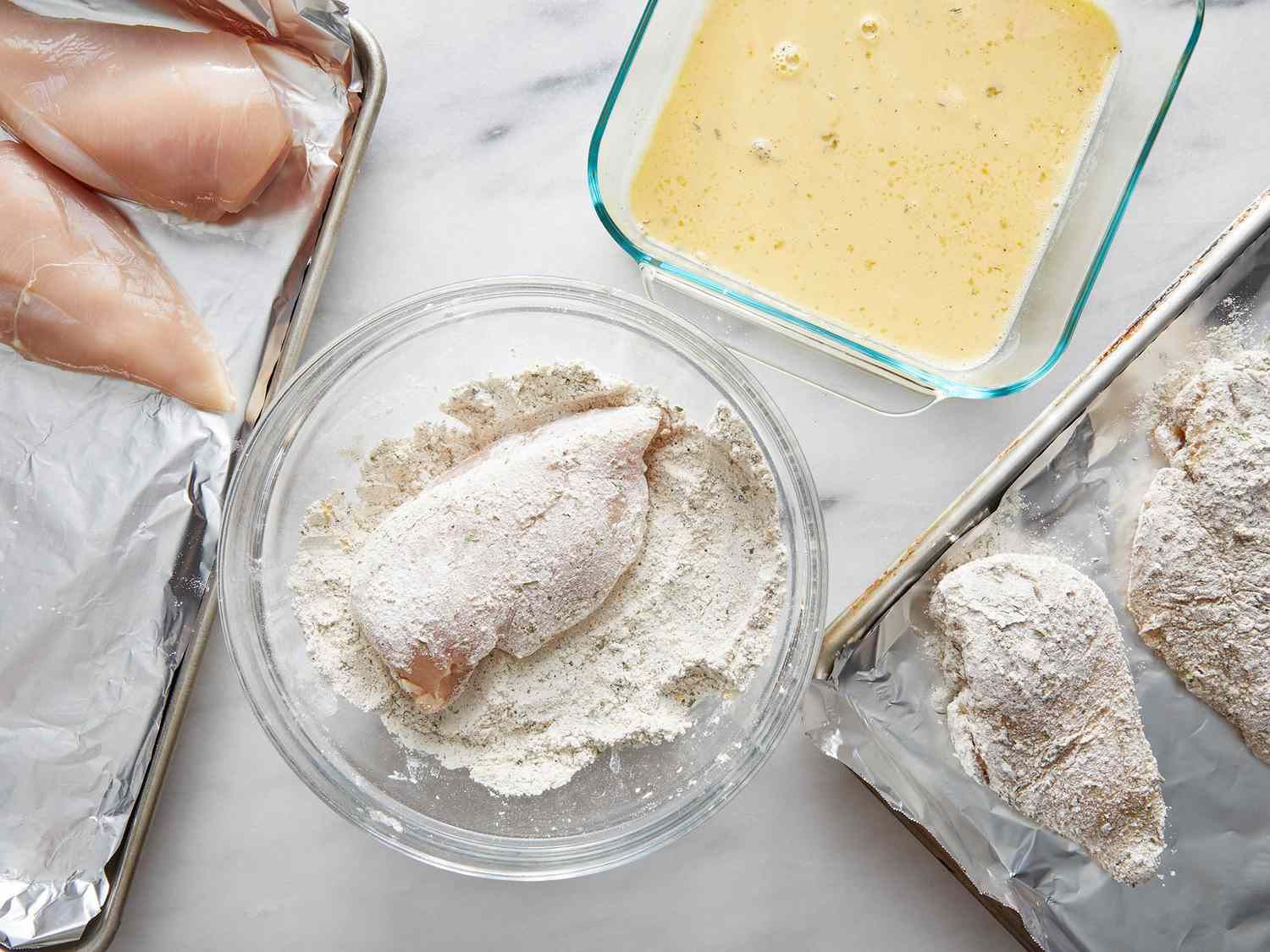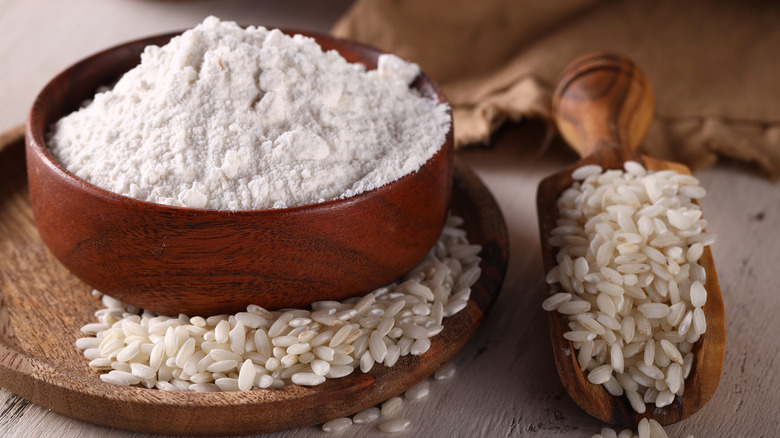Ever stood in the grocery store staring at flour options, wondering which one will give you that perfect crispy fried chicken? You’re not alone! The type of flour you choose can make a huge difference between soggy disappointment and crispy perfection Let’s dive into the world of flours and find out which ones work best for that mouth-watering fried chicken we all crave.
The Top 5 Flours for Crispy Fried Chicken
When it comes to frying chicken, not all flours are created equal. Here are the five best options that consistently deliver amazing results
1. All-Purpose Flour: The Reliable Classic
All-purpose flour remains the most popular choice for fried chicken, and for good reason. It gives your chicken that beautiful golden-brown coating with a neutral flavor that works perfectly as a base for your favorite seasonings
Why it works so well:
- Withstands high temperatures needed for cooking chicken thoroughly
- Creates an even coating that adheres well to the chicken
- Absorbs less oil, resulting in less greasy chicken
- Has a neutral flavor that pairs well with herbs and spices
- Readily available in all supermarkets
If you’re looking for a reliable option that won’t let you down, all-purpose flour is your best bet. Many Southern cooks swear by White Lily flour specifically for that perfect crispy crust.
2. Semolina Flour: For Extra Crunch Lovers
If texture is your priority, semolina flour might be your new best friend. Unlike finely ground wheat flour, semolina isn’t as finely milled, which results in a more textured, crunchy finish.
What makes it special:
- Creates a super crunchy exterior that holds up well to sauces
- Won’t fall apart when dipped
- Has a slightly yellow tint that adds to the golden appearance
- Holds herbs and spices well
- Maintains its crunch longer than some other options
The coarser texture of semolina flour makes it ideal for those who prioritize that satisfying crunch with every bite.
3. Rice Flour: The Lighter, Gluten-Free Option
Popular in Asian cuisine, rice flour creates a lighter coating that crisps up beautifully when fried. It’s also a perfect choice for those with gluten sensitivities.
Benefits of rice flour:
- Creates a lighter, tempura-like crispy coating
- Completely gluten-free
- Produces a texture that’s crispy outside but moist inside
- Absorbs less oil during frying
- Works well with various herbs and spices
Rice flour is my go-to when I want that light, airy crispness rather than a heavy coating. It’s especially good for smaller pieces of chicken that cook quickly.
4. Rye or Barley Flour: For Rich, Deep Flavors
These heavier flours bring rich, distinctive flavors to your fried chicken. They’re particularly well-suited for darker chicken meat like thighs and drumsticks.
What to expect:
- Provides a deeper, richer flavor profile
- Pairs especially well with dark meat
- Creates a hearty coating
- Goes golden-brown when fried properly
- Adds a subtle nutty undertone
If you’re looking to experiment beyond traditional flavors, these flours offer an interesting twist on classic fried chicken.
5. Chickpea Flour: Nutritious with Earthy Flavor
Gaining popularity beyond its traditional use in Mediterranean and Indian cooking, chickpea flour brings a unique flavor profile to fried chicken along with added nutritional benefits.
Why you might love it:
- Delivers a deep, earthy, warm flavor
- Gluten-free option
- Contains fewer calories and carbohydrates than all-purpose flour
- Can create a light batter when mixed with club soda
- Adds nutritional value to your meal
Chickpea flour might not be the first thing you think of for fried chicken, but it’s definitely worth trying if you’re looking for something different with added health benefits.
Can I Use Self-Rising Flour for Fried Chicken?
The short answer is yes, but with some considerations. Self-rising flour contains baking powder, which can cause the coating to puff up more than usual. This can create an extra crispy exterior, which some people love!
However, keep these things in mind:
- Self-rising flour expires faster than plain flour due to the baking powder
- It often contains added salt, which might make your chicken taste saltier
- Best used for smaller chicken pieces that require less frying time
- Works well if you prefer a puffier coating rather than a strictly crispy one
If you want to try self-rising flour, consider using it for smaller pieces and be careful with your additional seasoning to avoid over-salting.
The Secret to Extra Crispy Chicken: Cornstarch
Wanna know a secret that many restaurants use? Cornstarch! Either mixed with flour or used on its own, cornstarch can take your fried chicken to the next level of crispiness.
Try mixing equal parts cornstarch and all-purpose flour for that extra crunch. The cornstarch creates a coating that’s lighter yet crispier than flour alone. This combo is especially popular in Asian-style fried chicken recipes.
Why Does My Chicken Coating Keep Falling Off?
This is such a frustrating problem! Here are the most common reasons your coating falls off and how to fix them:
- Too much excess coating – Gently tap off excess buttermilk or flour
- Overcrowded pan – Fry in smaller batches to prevent pieces bumping against each other
- Not pressing the coating firmly – Gently pat the coating onto the chicken to help it adhere
- Too much handling – Try to flip your chicken only once during frying
- Not letting it rest – Allow coated chicken to air dry on a wire rack before frying
I found that letting the coated chicken rest for about 15-20 minutes before frying makes a huge difference in how well the coating sticks!
How to Choose the Best Flour for Your Fried Chicken
When deciding which flour to use, consider these factors:
- Flavor preference – Do you want a neutral base or something with character?
- Texture goals – Super crunchy or lightly crisp?
- Dietary needs – Gluten-free or lower-carb options?
- Available ingredients – What do you already have in your pantry?
- Type of chicken – Dark meat pairs well with stronger flours, while white meat works with lighter options
For most situations, all-purpose flour remains the most versatile and reliable choice. But don’t be afraid to experiment with different flours or combinations to find your perfect match!
My Favorite Flour Blend for Amazing Fried Chicken
After lots of experimenting, I’ve found that my absolute favorite blend is:
- 2 cups all-purpose flour
- 1/2 cup cornstarch
- 1 tablespoon semolina (for extra crunch)
- Seasonings of choice (salt, pepper, paprika, garlic powder, etc.)
This combination gives you the best of all worlds – reliable coating from the all-purpose flour, extra crispiness from the cornstarch, and additional texture from the semolina.
Final Thoughts on Choosing Your Flour
There’s no single “best” flour for fried chicken – it really depends on what qualities you’re looking for. If you’re a beginner, start with all-purpose flour and then experiment from there once you’ve mastered the basic technique.
Remember that whatever flour you choose, proper technique matters too:
- Season your flour generously
- Let your coating rest before frying
- Maintain proper oil temperature
- Don’t overcrowd the pan
With these tips and flour recommendations, you’re well on your way to fried chicken perfection! And remember, sometimes the most delicious discoveries happen when you’re willing to try something new. So grab that chicken, pick your flour, and start frying!
What’s your favorite flour for fried chicken? Have you tried any unusual options that worked surprisingly well? I’d love to hear about your experiences!

Use rice flour for a light and crispy finish

The reason rice flour absorbs less moisture and fat when frying is thanks to its lack of gluten since gluten absorbs both. According to the Southern Regional Research Center, part of the USDA, the oil uptake with rice flour is 50% less than with wheat flour. Choose smooth white rice flour for a crisp and incredibly light result, similar to tempura. Brown rice flour has more flavor, but its grittiness means its better used in baking or for thickening sauces than for frying.
Besides the textural benefits, rice flour has another advantage over all-purpose flour when frying chicken: The crumb stays crispy for longer, even when its coated in a sauce. Its finer texture means it browns more quickly in hot oil, though, so its best to stick to smaller pieces of poultry. Wings, drumsticks, or popcorn-style pieces work well — or cut larger portions, such as breasts, in half.
For an even crispier exterior, add some cornstarch to the flour. Its a trick that Bobby Flay likes to use for the crunchiest bite to his batter (per YouTube). The corn starch also helps to soak up additional moisture from marinades, so the coating wont become soggy. If youre using it as a dry dredge after marinating or brining fried chicken for a juicy result, go for 1½ cups rice flour mixed with ¾ cup cornstarch.
MAKING THE CRUNCHIEST CHICKEN WITH FLOUR, BAKING POWDER & #kansascity #chickenwingchickenwing
FAQ
What flour is used for fried chicken?
Do you use plain flour or self-raising flour for fried chicken?
You can fry chicken with either all-purpose flour or self-rising flour, but self-rising flour is generally preferred for a crispier, fluffier crust due to its leavening agents (baking powder) that create light, airy bubbles during frying. If you only have all-purpose flour, you can achieve a similar effect by adding baking powder and salt to it before using it to coat the chicken.
Is it better to fry with all-purpose flour or self-rising flour?
What kind of flour is best for frying?
Rice flour and cornstarch work particularly well because they fry up crispier than wheat flour. They also absorb less moisture and fat during the frying process, making the products less greasy. This is why rice flour is often used when making tempura because it produces a very thin and crispy, dry crust.
